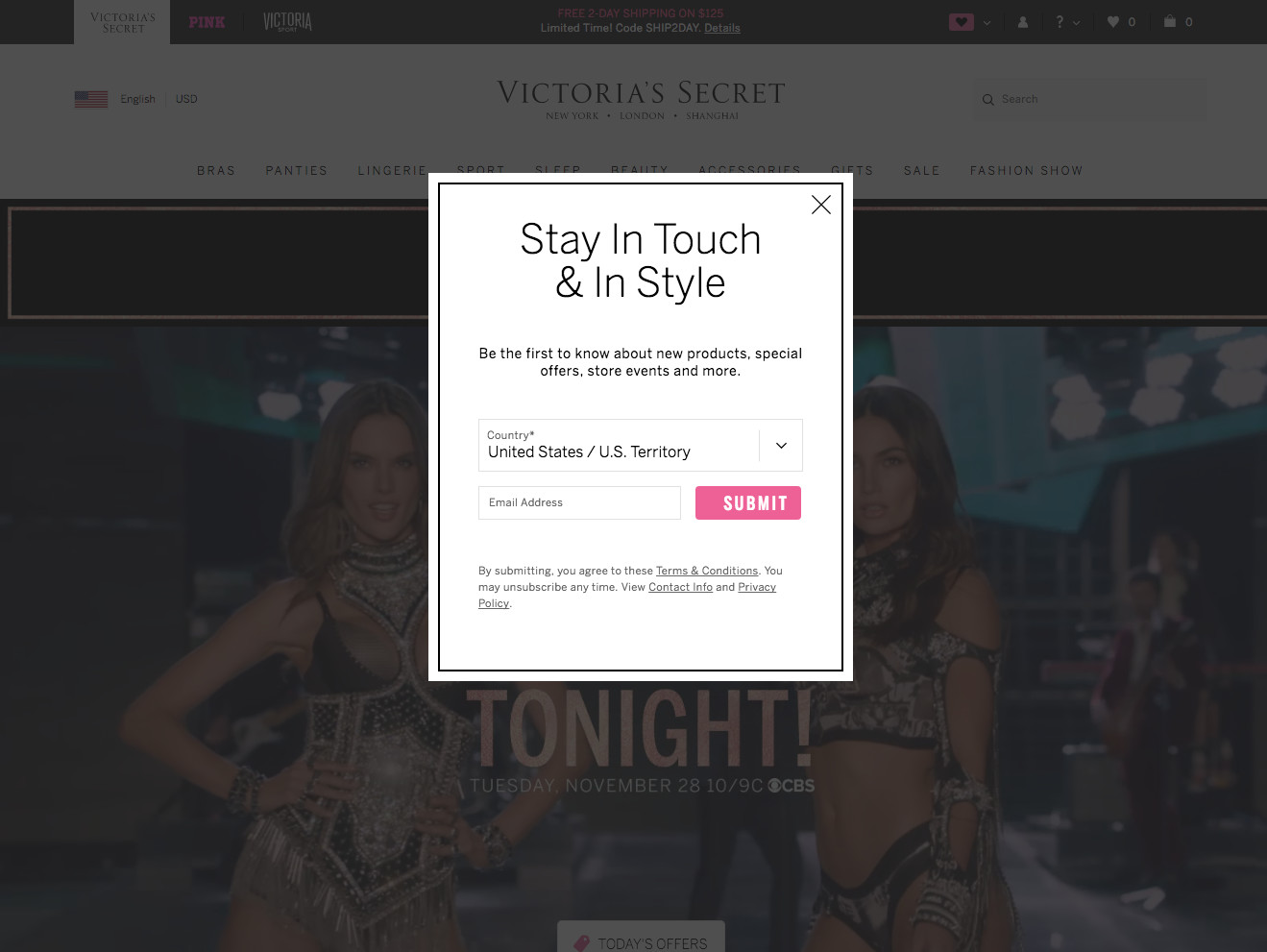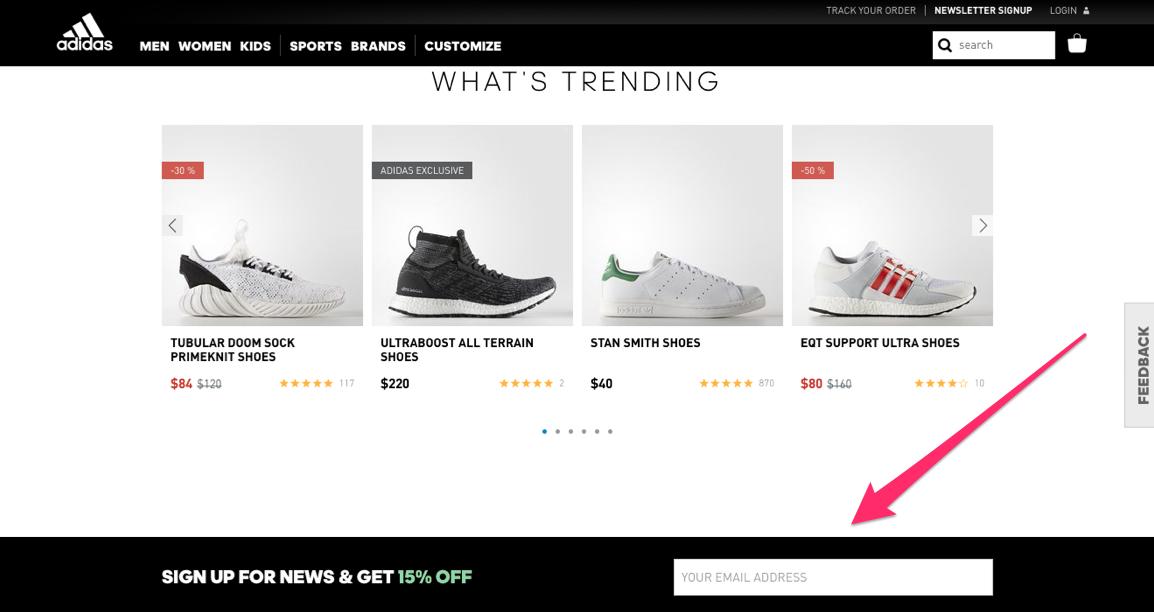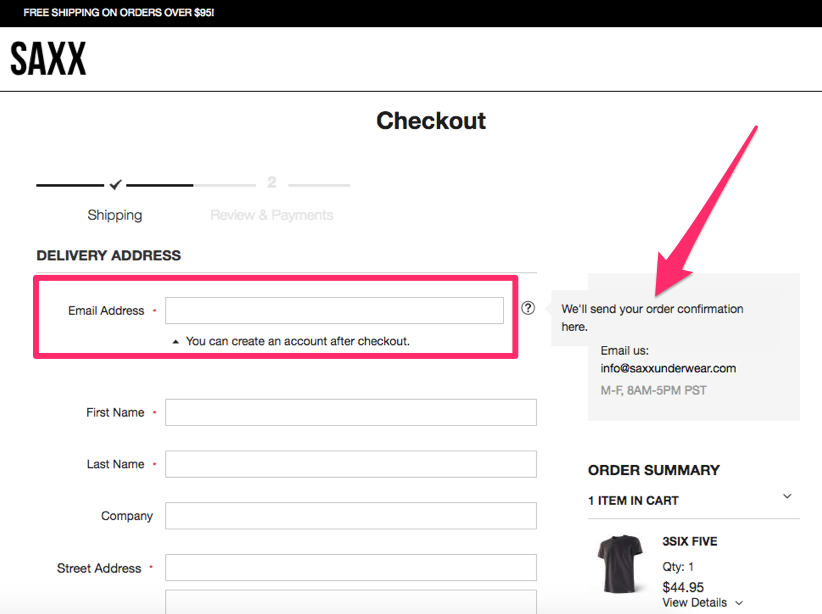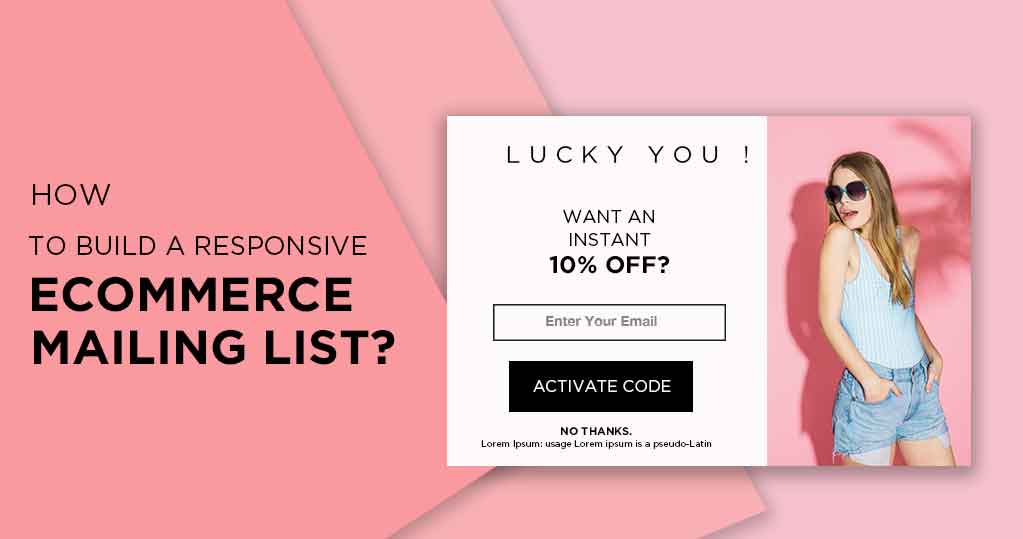Without a quality email list, your ecommerce business is dead in the water.
Email is hands down the best way to communicate with your audience, build trust and increase sales. Once someone gives you their email address, you have a direct way to communicate with them. Compare this with Facebook. You can create a list of 100K FB fans, however, just a small percentage of them will truly see your posts.
The difference is simple, with email marketing you can make the rules and control the customer experience. With social, media you can’t.
If you’re not actively building your list, you’re missing out on potential customers.
Let’s face it. Almost all of your visitors will come to your online store and leave without buying anything. If you can catch their email, you can start increasing your marketing and transform them into paying customers.
Still not convinced?

If you want to increase customer acquisition and marketing ROI. You need to grow your email list. But how?
Here we have prepared a top 5 ways that can actually make sense to turn an eye toward your online store as the first place to begin building your list.
Add a Pop-Up Offer
You don’t want to train shoppers to wait for or expect discounts, but one point in the customer journey where discounts are useful is when a visitor is heading toward the back button. This is your first chance to save a potential sale.
Love them or hate them — pop-ups work. Really well. If the offer is attracting, people won’t think twice about entering their email address.
Victoria’s Secret is a lightbox pop-up that hits you right in the face.

According to a case study by OptiMonk, companies like BitNinja got 65% more leads and saw a 114% improvement in their subscriber rates.
You can also run an exit intent pop-up on your store. These will only show if a visitor moves their mouse off the page, which usually means they intend to navigate somewhere else. Based on the targeting options of your tool, you might most likely disable these pop-ups for any individual who is a past customer or already subscribed to your list.
Use a Sign-up Button on Social Media Channels
There are many reasons why people follow brands on social media, but the prevailing reason given during most surveys is that they want to stay up to date on new products. Since your email list can also help support that outcome, it makes sense to highlight it as another option on your social channels.
Not all platforms are linked friendly, yet there are generally workarounds. On Instagram, you can use Linktree to add many links in your bio. This allows you to put one link to direct visitors to a sign-up form for your email list. You might need to consider separating subscribers added through Instagram so you can track generally how well it’s influencing the growth of your email list.
Likewise, you can add a call-to-action button on your Facebook business page to urge your followers to agree to accept your email list.
Sign up Forms on the Websites
Having a signup form on your website is a quite standard alternative. If you have an ecommerce store and you’re just getting your feet wet with your list building strategy, adding an opt-in option to your footer is a logical place to start.
While the number of companies using the footer form to solicit signups is slightly down in 2017 compared to 2016, the footer is still by far the most common placement for an opt-in location. By the time your users scroll and reach the footer, they have already had an opportunity to browse through your site and figure out about your brand and product.
Now, they can make a more informed decision if they want to be on your email list. This is different from having your opt-in form in the header because your visitors may feel spammed or forced to sign up too soon.
Chances are, joining your email list is not the first thing on someone’s mind when they visit your website. The customer has other priorities and intentions. So leave them into it, and place your opt-in form at the bottom of your website.

People are hesitant to give out their information. It’s understandable. There’s a good chance your customers have had some negative experiences with other companies after giving out their email addresses. Ask for your customers’ email addresses while they are finalizing the order.
But give them a reason. You’re not adding them to your email list just yet, but you’ll need to send them an order confirmation.
Here’s a great example from SAXX. The email address is required to check out. Why?
SAXX will send you a confirmation of your order. They also don’t force you to create an account.

Forcing the customer to make a profile in order to check out is one of the top reasons ecommerce sites experience shopping cart abandonment. So it’s a special reward that this checkout form specifies.
Collect Email Addresses at your Next Pop-Up Event
Temporary pop-up and pop-in shops are a decent way for emerging brands to build awareness, get product reviews, and allow customers to have a hands-on, tactile experience with a new product. But they’re also a savvy approach to build your email list.
Keep in mind, forms often link with lead generation and email marketing can easily make the change from URL to IRL with only a pen and paper. You can bring a clipboard and request individuals to write down their email address and name or, you can give an iPad where people can easily submit their address.
Consider creating a special offer to urge your shop visitors to join. You can try to show checkout offers like “Enter email to get up to 50% off on your next order” or “Get 20% off Giftcard by signing up with us”.
It’s a smart idea to segment these lists by event, so you can send customized emails later.
Building an Email List isn’t One Size Fits All
No two businesses are actually alike, so it’s vital to test different techniques for building your email list to discover what works best. Based on how significant email marketing is as a channel for your company, your investment in increasing your list may be different, as well. But, we hope these tips helped spark innovativeness and will get you started on creating a quality email list for your ecommerce store.







